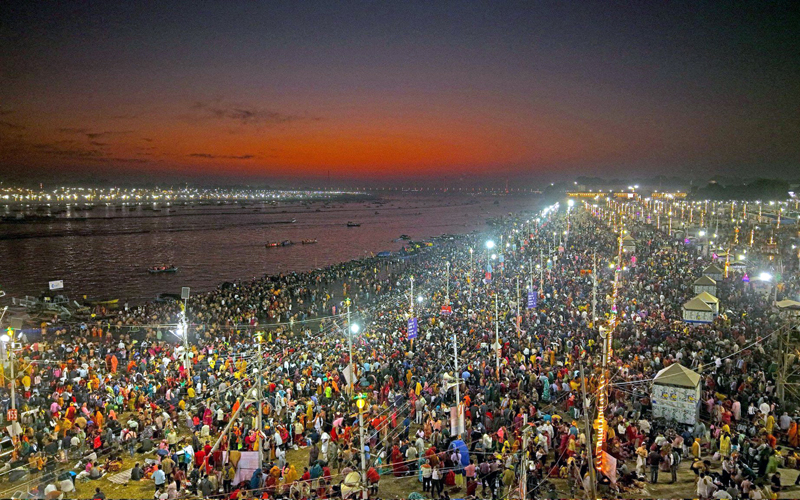Prayagraj, Feb 22: The Yogi Adityanath administration has implemented an innovative AI-based surveillance system at the Maha Kumbh, marking its inaugural use on such a large scale. This initiative aims to prevent congregation-related accidents in the future and avoid tragedies similar to the recent one, according to Mela officials.
Tragically, a stampede on January 29 resulted in the loss of at least 30 lives and left over 90 injured during the ongoing Maha Kumbh gatherings in Prayagraj, which has already drawn a staggering 60 crore pilgrims.
The Mela grounds, spanning approximately 4000 acres, are being monitored by around 2,750 closed-circuit cameras, 250 of which are AI-enabled. These cameras relay information to the Integrated Control and Command Center (ICCC), providing authorities with valuable real-time data on crowd density per square meter at the bathing ghats, inflow of visitors per minute, vehicle parking statuses, crowd accumulation at critical points, and alerts based on established danger thresholds, officials explained.
“Once the congregation concludes, we will analyze the data from the AI system provided during the Mela. This will allow us to revise the thresholds for better organization in future events of this magnitude, enabling us to better prevent a recurrence of tragedies like this one,” stated Amit Kumar, SP and in-charge of ICCC.
Officials indicated that the ICCC operates four units, two of which are temporary setups within the Mela premises. This facility serves as the central hub for traffic management, crowd control, security, emergency responses, sanitation, healthcare, and public communication during the Kumbh Mela.
A glimpse into the command center headquarters showcased multiple teams of officers, totaling nearly 400 personnel, vigilantly monitoring the CCTV feeds from all 25 sectors of the vast Mela grounds, round the clock.
Large screens display real-time data based on preset algorithms, featuring color-coded alerts and graphical charts that are interpreted and communicated to parallel radio teams operating across 13 grids.
These teams relay the interpreted information to on-ground units for prompt action, Kumar clarified.
“We anticipated a large crowd, but the turnout exceeded our expectations,” the IPS officer remarked. “The intense religious fervor among pilgrims this year caused barriers to be breached on that unfortunate night. While we managed to control the situation swiftly, some harm was done.”
Officials confirmed that they revised standard operating procedures (SOP) in the aftermath of the stampede, which has thus far proven effective in managing the increasing crowd at what is arguably the largest religious gathering in the world.
“The application of the SOPs is now being conducted with more diligence. We have increased the frequency of announcements via our public address system. Our announcement volume and clarity have also improved,” Kumar noted.
The 2025 edition of the Maha Kumbh will officially conclude on February 26, following the holy dip at the confluence of the Ganga, Yamuna, and Saraswati rivers during the auspicious hours of Maha Shivratri. (Agencies)


Leave a Reply